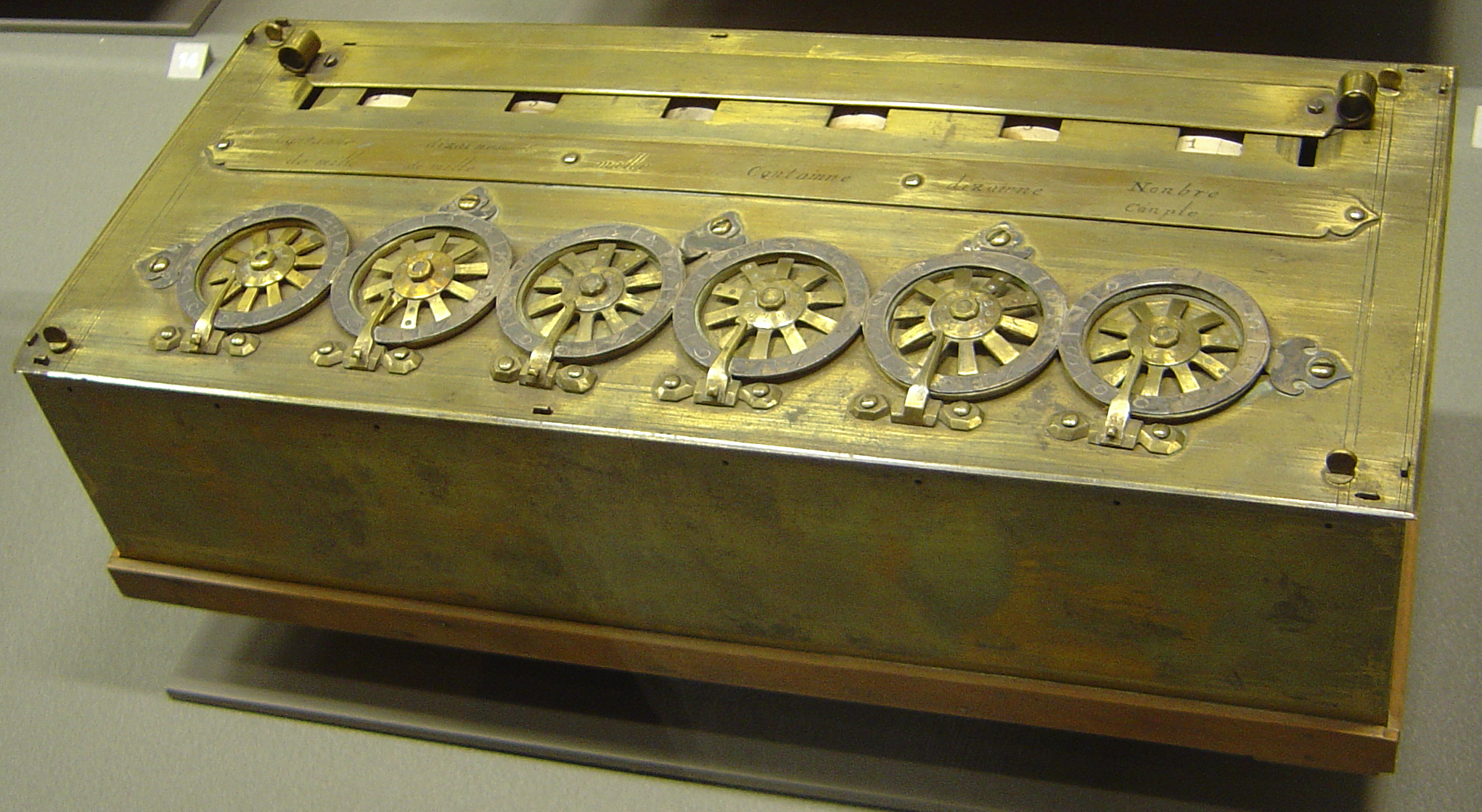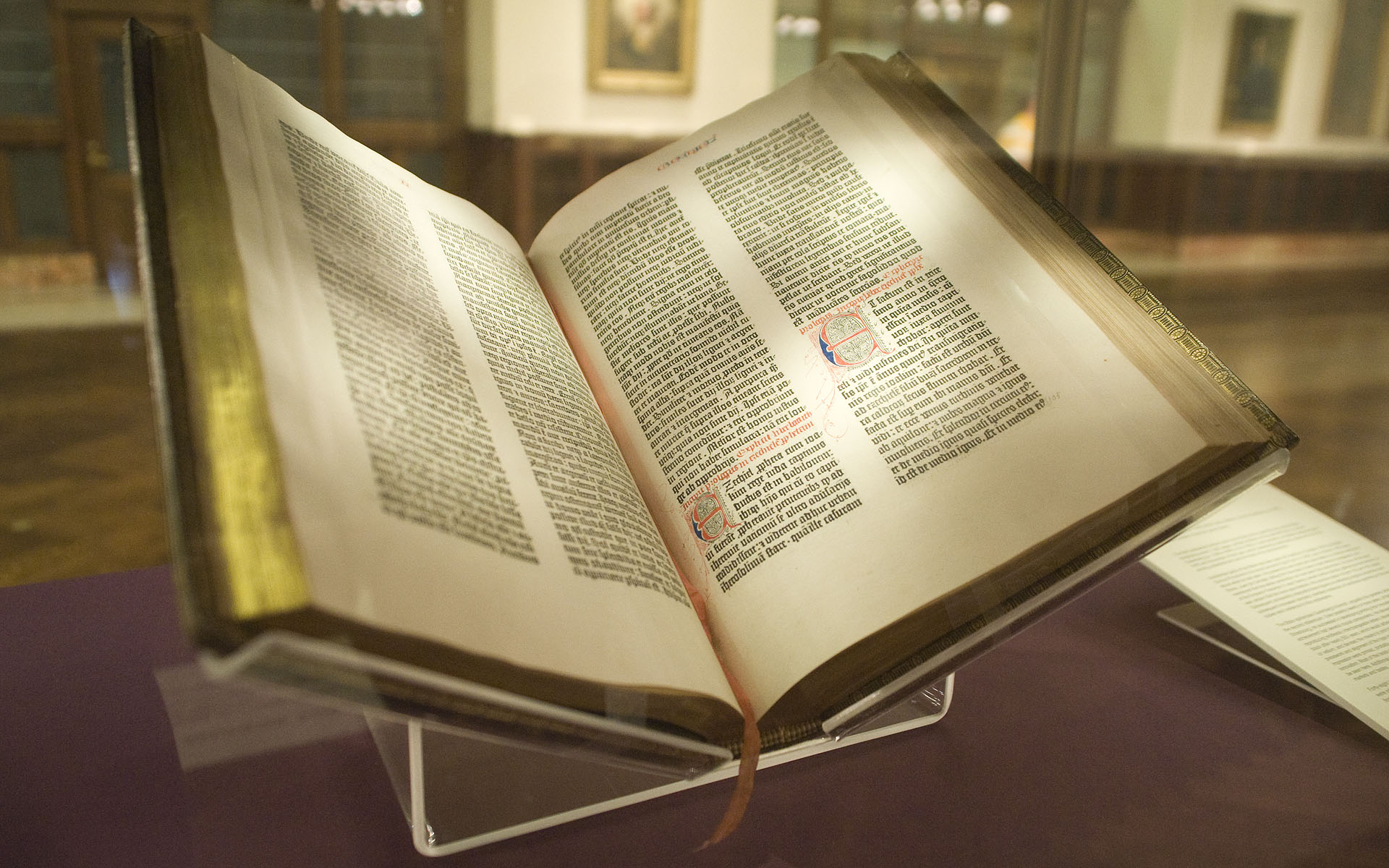Blaise Pascal

"Blaise Pascal. Lithograph after G. Edelinck after F. Quesnel Wellcome V0004512" by wellcome images. Licensed under CC BY 2.0 via Wikimedia Commons.
Blaise Pascal was a very original thinker. He was also a very broad thinker. The topics he contributed to include Mathematics, Theology, Philosophy, Physics, and Politics. His contemporaries, although not always in agreement with him, nevertheless generally respected his ability to come up with interesting solutions.
According to his sister, when he was 12 he rediscovered some of the propositions of Euclid's elements, including the 32 proposition of Euclid. When he was 15 he created a one page treatise on conics that simplified and expanded on the accumulated knowledge of conics at that time. (Pascal v-ix)
"Secciones cónicas" by Drini - Own work. Licensed under GFDL via Wikimedia Commons.
He invented an arithmetic machine called a Pascaline that added and subtracted numbers mechanically. It could be adapted to different bases to accommodate the French monetary system. This was one of the first mechanical computers. It paved the way for future thinkers to connect the concepts of gears and arithmetic. Leibniz, Babbage, and others could then build upon his concepts.

By © 2005 David Monniaux / , CC BY-SA 3.0
He made many important contributions to the study of geometry including some important discoveries about conic sections and the cycloid. The cycloid had been known for many years before Pascal but since the more complex mathematical methods needed to answer basic questions about it were not possible using the standard geometrical methods of the ancients it was ignored. These methods, once discovered by Pascal, continue to have implications on how we do calculus today. For instance: He suggested dividing the area under the curve into an infinite number of little pieces. This is the basis of integral calculus today. He used similar methods of subdivision to find the areas of solids of revolution (Perspectives).
Generated by Geogebra.org
Here are some of the questions that Pascal and his contemporaries investigated regarding the cycloid(Perspectives):
- What is the area under the cycloid? Specifically, what is the area under one hump? They found it to be $3\pi r^2$
- What is the length of the curve over one hump? This is $8\pi$.
Pascal felt very strongly about how things should be solved. He wanted to make sure that nothing was left undefined unless it was clear that it wouldn't be easy to define anyway. He also wanted to make sure that words were not left having different meanings so that during a discussion the meanings could be ambiguous. Both of these concepts affect our thinking today but were rather original for his time.(Hammond 216-233)
Pascal also integrated his faith with his mathematics. He wrote a lot on theology. The collection of his writings called Pensees is a compilation of notes that he took for a theological book he planned to write and might have if he had lived longer than 39. In it he makes many references to God and works through what he considers to be important in his theology.

By NYC Wanderer (Kevin Eng) - originally posted to Flickr as Gutenberg Bible, CC BY-SA 2.0
Pascal illustrates some important principles that we can use today as we learn and research:
- We need to investigate what we hear with an open mind and with a healthy skepticism.
- We need to consider carefully what those who've gone before us say and we also need to do our own experiments and research.
- We need to look for simple overarching principles in complex data — sometimes the shortest way is the best way.
- We need to remember that not everything can be solved by deduction, particularly first principles, and we need to be willing to accept the basics through the knowledge from the heart.